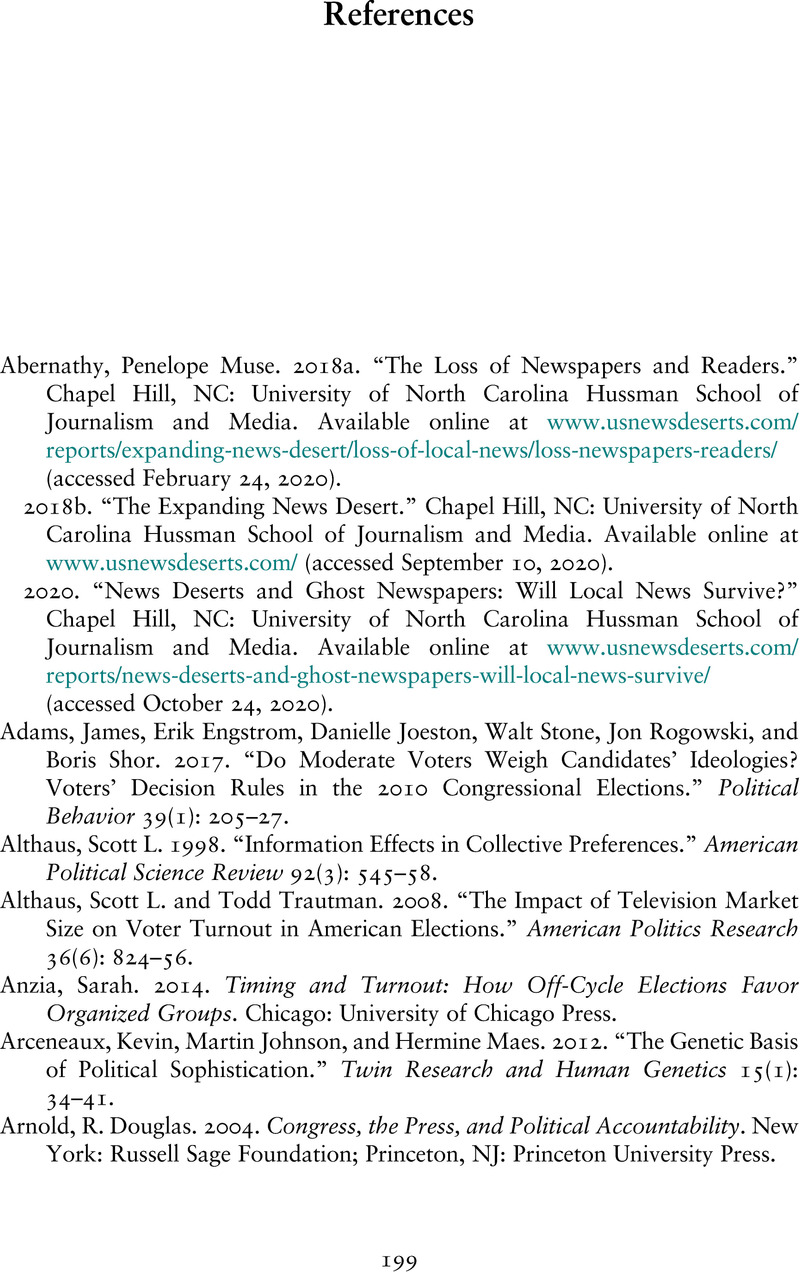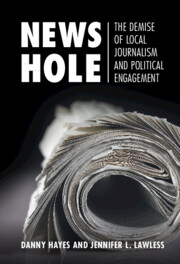Book contents
- News Hole
- Communication, Society and Politics
- News Hole
- Copyright page
- Contents
- Figures
- Tables
- Acknowledgments
- 1 The Local Political Engagement Puzzle
- 2 The Great Gutting of US Newspapers
- 3 Where Local News Has Suffered Most
- 4 As Local News Goes, So Goes Political Engagement
- 5 Everyone Loses When Local News Declines
- 6 Saving Local News
- 7 Local News and American Democracy
- Appendices
- References
- Index
- Series page
- References
References
Published online by Cambridge University Press: 08 September 2021
- News Hole
- Communication, Society and Politics
- News Hole
- Copyright page
- Contents
- Figures
- Tables
- Acknowledgments
- 1 The Local Political Engagement Puzzle
- 2 The Great Gutting of US Newspapers
- 3 Where Local News Has Suffered Most
- 4 As Local News Goes, So Goes Political Engagement
- 5 Everyone Loses When Local News Declines
- 6 Saving Local News
- 7 Local News and American Democracy
- Appendices
- References
- Index
- Series page
- References
Summary

- Type
- Chapter
- Information
- News HoleThe Demise of Local Journalism and Political Engagement, pp. 199 - 208Publisher: Cambridge University PressPrint publication year: 2021



